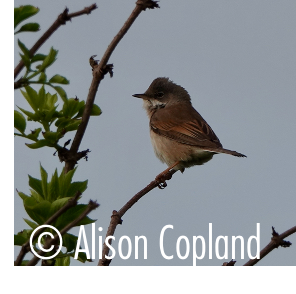Site And Records Information
Fifty years ago Yellow-browed Warbler were an extreme rarity to the UK, and needed a description written to the BBRC (British Birds Rarity Committee) for the report to be considered for acceptance. On 11th October 2018 an estimated 500 Yellow-browed Warbler were seen across the UK highlighting the drastic change in status of this delightful bird. In recent years Poole Harbour has seen its fair share of them too with 16 records in 2016 alone. Scanning through Long-tailed Tit flocks anywhere around the harbour could yield a Yellow-browed Warbler with several lucky birders in Poole even having them in their gardens! October and early November are the best times but there have also been a couple of over-wintering records too.
First record – 1 on 17th October 1971 Studland Heath
1 on 29th September 1985 at Little Sea
1 wintered at Border Drive, Lytchett Bay It was first discovered on 5th Dec 2003 staying until 24th Jan 2004
1 on 5th October 2008 at Middle Beach, Studland
1 on 16th October 2008 at South Haven, Studland 1 on 25th October 2008 at South Beach, Studland
1 on 19th October 2011 near Pilot’s Point, Studland
1 on 5th November 2011 at Studland
1 on 19th and 20th October 2012 at Poole Park
1 over wintered at Knoll Beach, Studland 2013 until April 4th 2014
1 on Brownsea Island 3rd Oct 2014
1 on 12th October 2014 at Glebelands, Studland
1 on 12th October 2014 at Swineham GP
1 on 27th October 2014 Lytchett Bay
3-4 individuals located along the Studland Peninsular in October 2014. South Haven, Ballard, Glebelands, Knoll beach, Middle Beach
1 at South Haven, Studland on October 2nd 2015
2016
October 2016 saw an unprecedented influx with numerous sightings and ringing records.
1 on 28th – 29th September 2016 at Coombe Heath, Arne (L.Philipps et al)
3 on 3rd October 2016 at the PCW Drain (P.Morton et al)
3 on 4th October 2016 at the PCW Drain with one newly ringed (P,Morton et al)
1 on 4th October 2016 in an Oakdale garden (I.Ballam)
2 on 6th October 2016 at PCW Drain, both newly ringed (I.Lewis et al)
3-5 on October 6th 2016 at RSPB Arne (numerous reports, but three together on the Shipstal Trail with reports from elsewhere on the reserve).
1 on 7th October 2016 at the PCW Drain newly ringed (I.Lewis et al)
1 on 8th October 2016 newly ringed at Lytchett Bay (B.Gifford et al)
1 on 8th October 2016 at RSPB Arne (Arne staff et al)
1 on 9th –10th October 2016 in Chads Copse, Lytchett Bay (I.Ballam et al)
1 on 10th October 2016 in the Arne car park (L.Phillips et al)
1 on 11th October 2016 at Lytchett Heath, newly ringed (S.Robson et al)
2017
1 on 5th Jan 2017 at Greenlands Farm, Studland (B.Edge)
1 on 8th Jan 2017 on Lytchett Heath (M.Constantine, M.Robb, N.Hopper, P.Morton)
1 on 10th Jan 2017 at East Holme (H.Murray)
1 on 26th & 27th Jan 2017 at Cabots Lane, Poole – (K.Lane et al)
1 on 20th Sept on private site at Arne (MJ Lawson)
1 on 24th-26th Sept in and around the Arne RSPB car park (Arne staff)
1 ringed on 17th Oct 2017 at Ballard Down (O.Slessor)
1 ringed on 26th Oct 2017 at Ballard Down (O.Slessor)
1 on 27th Oct in an Oakdale garden (MJ Lawson)
2018
1 ringed on 8th Oct 2018 at Ballard Down (O.Slessor)
1 ringed on 9th Oct 2018 at Ballard (O.Slessor)
1 in PCW Drain 15th Oct 2018 (I.Ballam)
1 on Ballard Down 16th October 2018 (P.Morton et al)
1 ringed on 5th Nov 2018 at Ballard Down (O.Slessor)
2019
1 at Lytchett Bay View from 4th-9th Dec.
1 at Broadstone on 13th Mar was the only spring record, and 1 also at Broadstone on 1st Nov.
2020
1 at Cold Harbour, Wareham Forest on 16th & 17th Oct.
1 at Lytchett Heath 11th Oct
1 at Upton CP 19th Oct
2021
1 in private garden Broadwater Avenue, Poole on 8th Feb and possibly the same bird on 12th Feb in Trigon Road, Poole.
